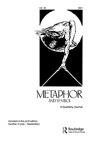Like a Virus. Similes for a Pandemic
IF 3.3
3区 文学
0 LANGUAGE & LINGUISTICS
引用次数: 0
Abstract
ABSTRACT The Covid-19 pandemic has had a great impact on the life of every inhabitant of the planet. During 2020 and 2021 a significant amount of work on how the pandemic is being conceptualized and communicated has been done. Most work has focused on the role of metaphor in the construal of specific cognitive frames. In this paper, we turn to a similar but different conceptualization mechanism, i.e. simile. Drawing from recent socio-cognitive and discursive empirical approaches to similes, this paper focuses on “target is like source” constructions in English and Spanish containing (corona)virus either as target or source of the simile. The analysis is based on 200 examples found in the digital media during the first wave of the pandemic in 2020. First, the constructions, conceptualizations and mappings are analyzed. Second, the relevant discourse features (genre type, relation to subjectivity, text location and structuring properties) are described. Finally, the cross-linguistic English-Spanish analysis shows that, despite the many coincidences in both datasets, there are different tendencies as for the use of culture-specific mappings and the genres where the similes occur in. The study aims at testing to what extent the general features characterizing similes also hold in the case of (corona)virus, both as source and as target. The corpus analysis contributes, in addition, to the emerging line of research on the use of figuration in the communication of the pandemic, as well as to the study of the discursive dimensions of similes in real settings.就像病毒一样。流行病的相似性
摘要新冠肺炎大流行对地球上每一位居民的生活都产生了巨大影响。在2020年和2021年期间,已经就如何概念化和传播这一流行病做了大量工作。大多数工作都集中在隐喻在特定认知框架的解释中的作用上。在本文中,我们转向一种相似但不同的概念化机制,即明喻。本文借鉴了最近对明喻的社会认知和话语经验方法,重点研究了英语和西班牙语中包含(冠状病毒)病毒作为明喻目标或来源的“目标像源”结构。该分析基于2020年第一波疫情期间在数字媒体中发现的200个例子。首先,分析了结构、概念和映射。其次,描述了相关的话语特征(体裁类型、与主体的关系、文本位置和结构特征)。最后,跨语言的英语-西班牙语分析表明,尽管这两个数据集存在许多巧合,但在使用特定文化的映射和明喻出现的类型方面存在不同的趋势。该研究旨在测试在(冠状病毒)病例中,明喻的一般特征在多大程度上也适用,无论是作为来源还是作为目标。此外,语料库分析有助于新出现的关于在疫情传播中使用比喻的研究,以及对真实环境中明喻的话语维度的研究。
本文章由计算机程序翻译,如有差异,请以英文原文为准。
求助全文
约1分钟内获得全文
求助全文
来源期刊

Metaphor and Symbol
Multiple-
CiteScore
2.90
自引率
0.00%
发文量
23
期刊介绍:
Metaphor and Symbol: A Quarterly Journal is an innovative, multidisciplinary journal dedicated to the study of metaphor and other figurative devices in language (e.g., metonymy, irony) and other expressive forms (e.g., gesture and bodily actions, artworks, music, multimodal media). The journal is interested in original, empirical, and theoretical research that incorporates psychological experimental studies, linguistic and corpus linguistic studies, cross-cultural/linguistic comparisons, computational modeling, philosophical analyzes, and literary/artistic interpretations. A common theme connecting published work in the journal is the examination of the interface of figurative language and expression with cognitive, bodily, and cultural experience; hence, the journal''s international editorial board is composed of scholars and experts in the fields of psychology, linguistics, philosophy, computer science, literature, and media studies.
 求助内容:
求助内容: 应助结果提醒方式:
应助结果提醒方式:


